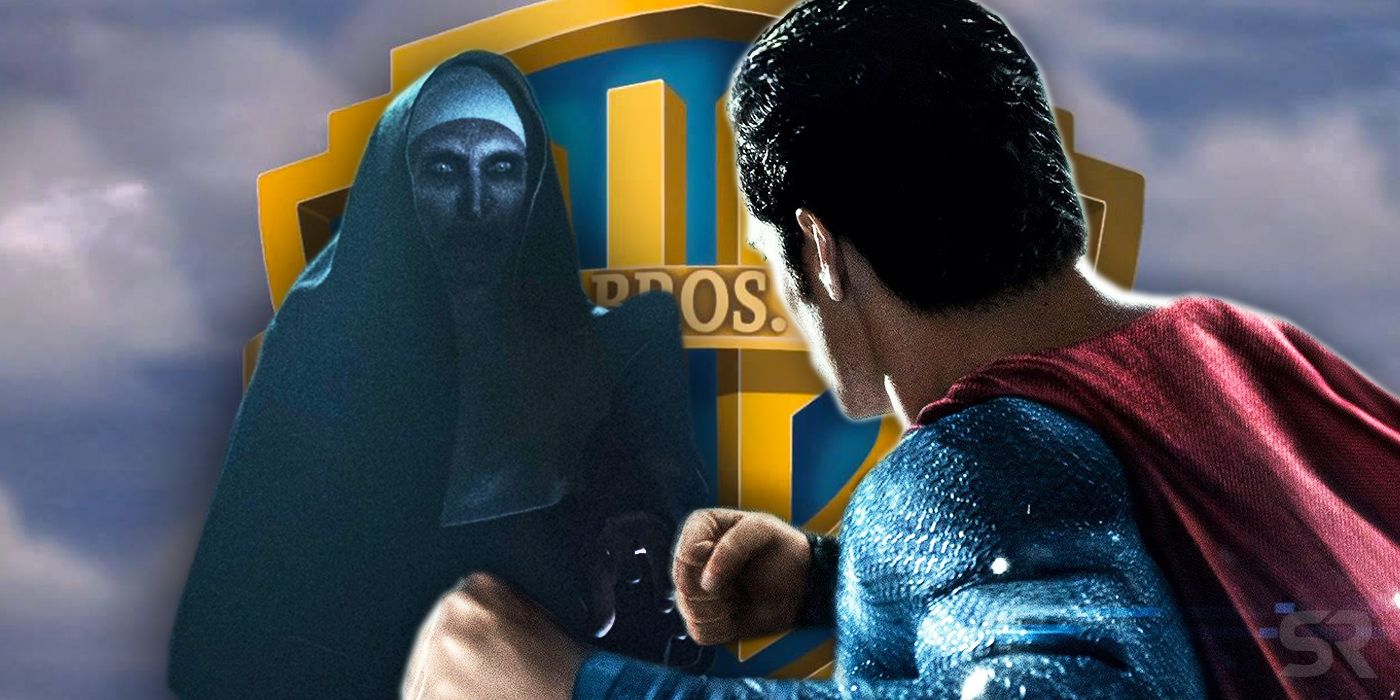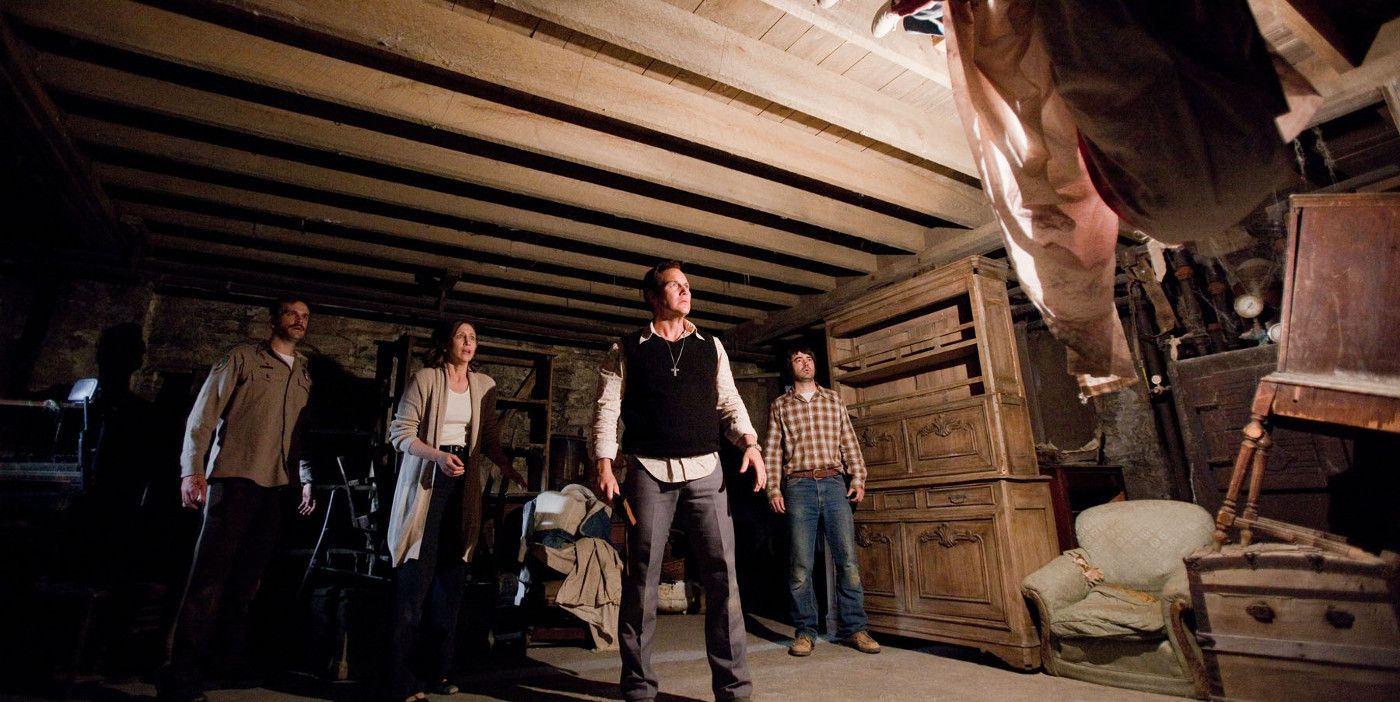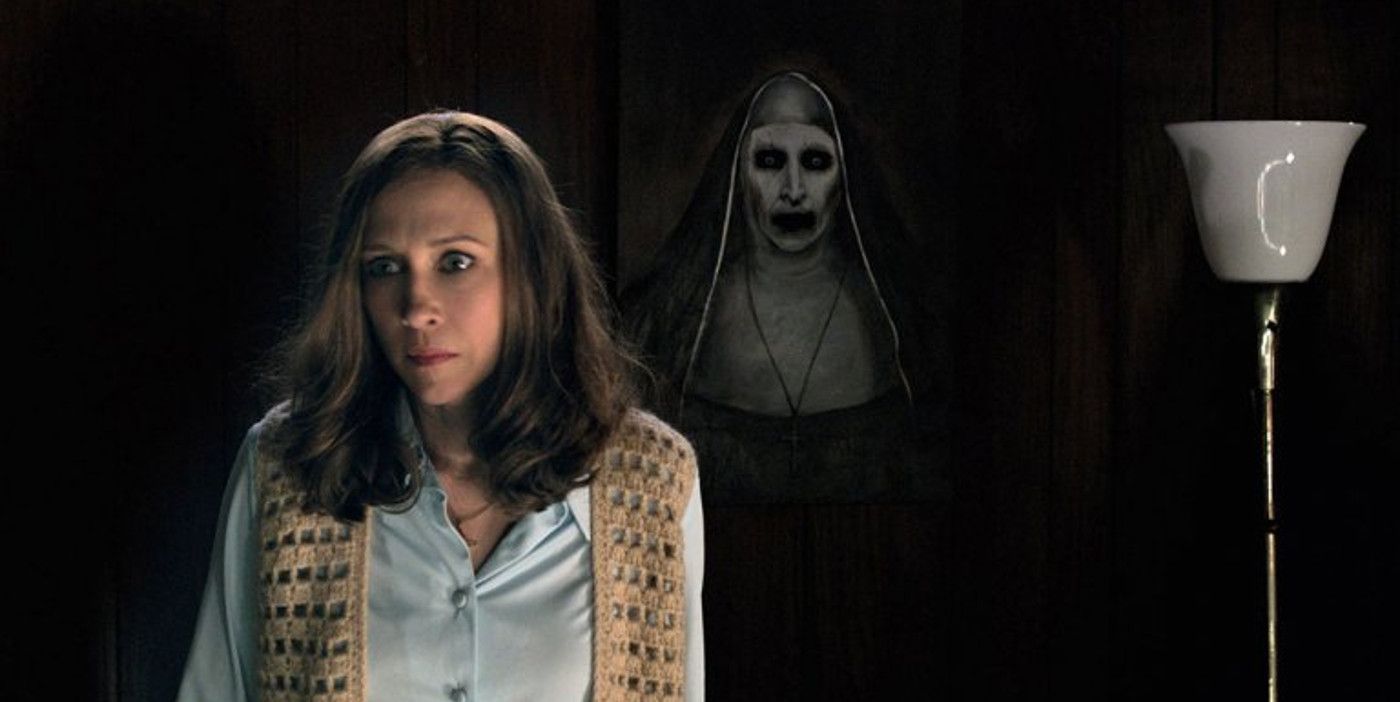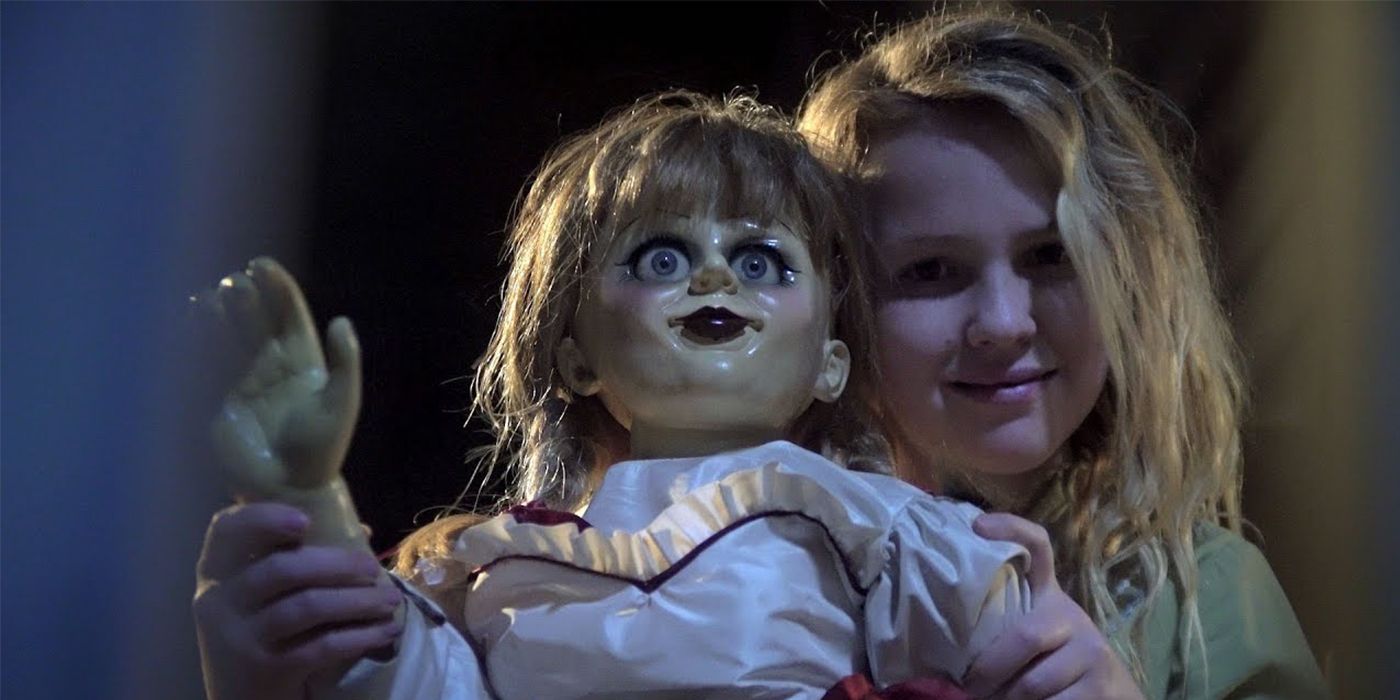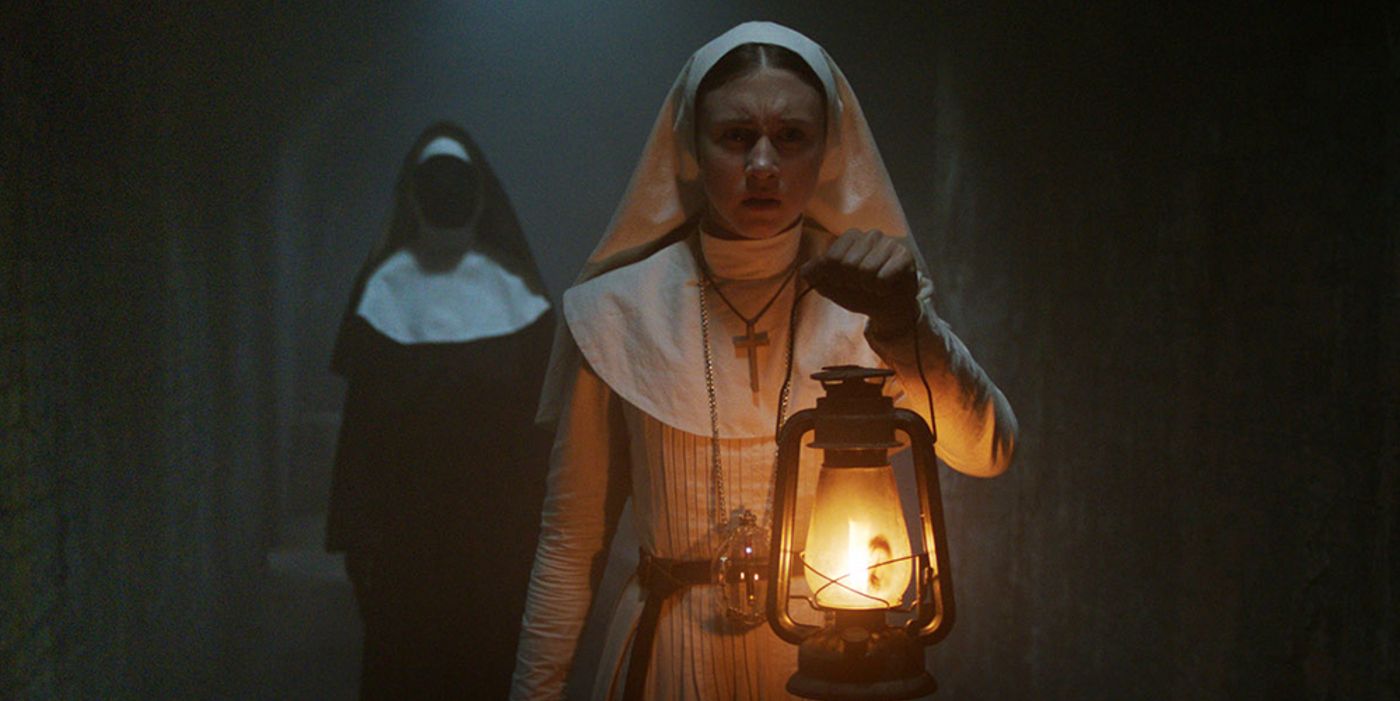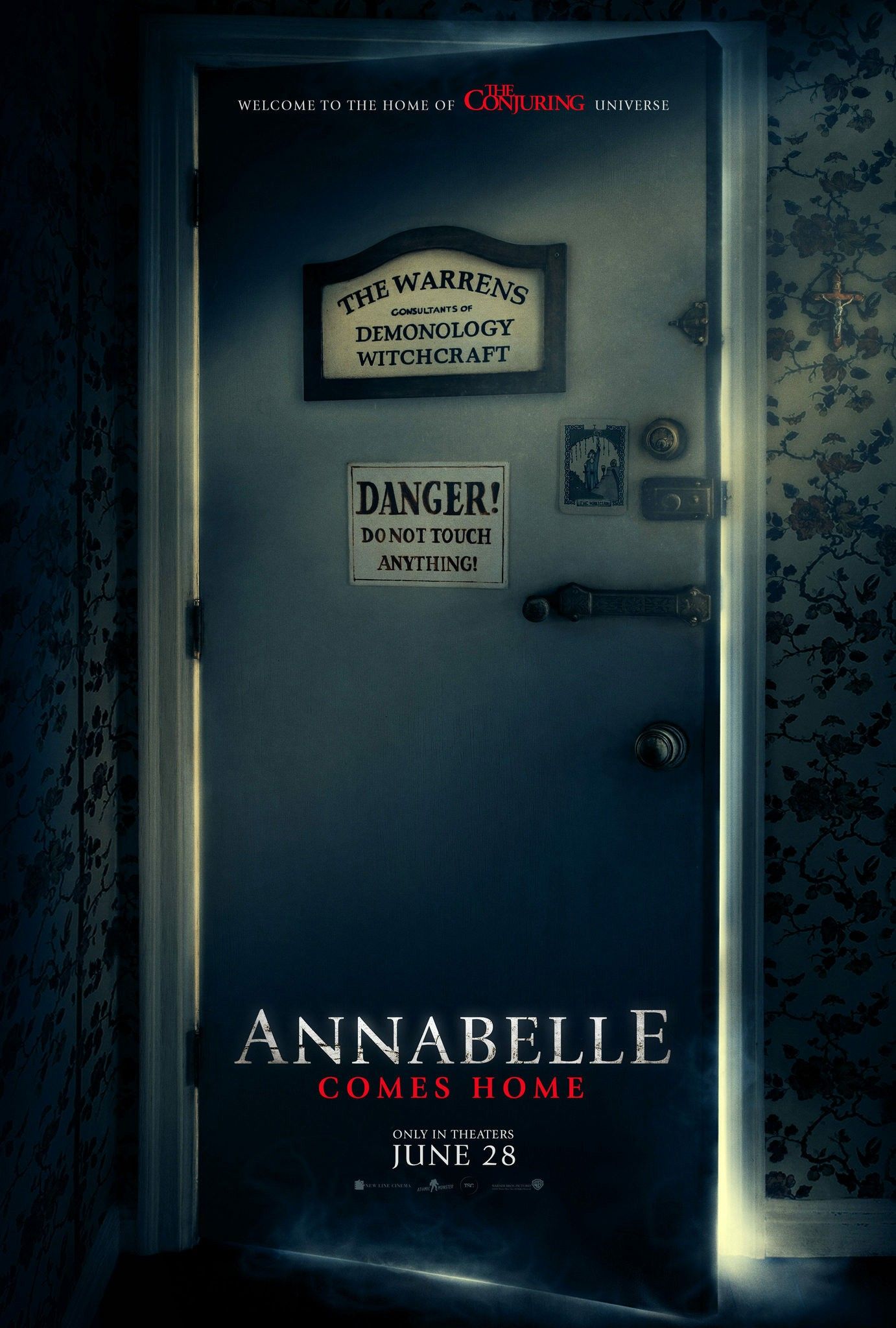Five movies in, The Conjuring universe is Warner Bros.' most successful cinematic universe. Across the five films and, with The Nun, three individually-titled series, the expansive horror franchise has consistently drawn huge box office returns, becoming one of the most reliable money-spinners of the studio's calendar year.
This isn't to posit that The Conjuring-verse - produced by subsidiary New Line Cinema - has somehow become WB's top selling property. Its numbers, while impressive, are still far from the kind of turnover the likes of Harry Potter and DC can generate. But we're talking inter-woven cinematic universe here, the kind of which Harry Potter isn't with its Star Wars-esque originals and prequels whose installments have all followed a standard, chronological release schedule; Fantastic Beasts is more akin to The Hobbit for Lord of the Rings, forming a historical bedding for the main series with its own particular narrative, than it is Annabelle and The Nun's referential setup and elaboration for The Conjuring.
Related: The Conjuring Universe Complete Timeline: From The Nun To The Warrens
With DC looking to slowly regroup starting with Aquaman in December and Wonder Woman 1984 next year, there's a couple of lessons to be learned from the world of the Warrens and their supernatural investigations in making a filmic universe work.
- This Page: Why The Conjuring Movies Work
- Page 2: The Big Lessons In Crafting A Shared Universe
The Conjuring Movies Are Consistently Profitable
Reliability is key in making any franchise work, and triply so for building a universe where more than one movie is being developed at any one time with several years of releases in the pipeline. Money-making needs to be regular and sustainable. Above all else this has been what’s allowed the Marvel Cinematic Universe to become what it is – their films are all comfortably in the green, allowing them to stay the course of every major arc they've put in motion.
Every production from The Conjuring has made money, and not just some money, a lot of money - collectively they’ve brought in close to a billion-and-a-half dollars on a combined budget of around $100 million. The most expensive, The Conjuring 2, cost $40 million, a fraction of your average blockbuster.
Being horror really helps here because the genre relishes in smaller budgets; intimate sets, rarely any big sequences or stunts and what not. But even with that, these features are made efficiently, with very little excessive spending, even though the money is available. Annabelle, greenlit after The Conjuring made over $300 million on its $20 million budget, was produced for $6.5 million.
Related: The Nun: The True Story Behind The Conjuring Prequel
Last year’s Annabelle: Creation saw an increase to $17 million, and this year’s The Nun was made for $22 million. The baseline is kept low but malleable, matching expenditure to the story being told without forcing filmmakers and producers to sacrifice overall production value, while profit soars, meaning everybody wins.
The Conjuring Movies Are Consistently Entertaining
The Conjuring movies aren't standard horrors - heavy on the jump-scares, uncomplicated and easy on the gore and really menacing imagery - but as a-typical studio horror fare, they’re total crowd-pleasers. Audiences like being scared, and The Conjuring-verse delivers a good scream in a theatre without having to worry about watching someone get gutted alive or a psychological nightmare. They’re scary films that are all but specifically made for people that aren’t into the genre, and they’re very good at it.
They structure themselves around their big, memorable scares, such as Elizabeth Warren’s encounter with painting of the nun in The Conjuring 2, like a Marvel film does its fight scenes. The structure and characters are all straightforward, following broad archetypes and standards without much deviation. The terror they provide teeters right on the line between being easy to understand and digest and just out there enough to still be scary.
And there isn't some massive divide between audiences and critics here, either. As film-goers have been seeing these en-masse, reviews and discourse have been generally favorable. Both Conjurings have around 80% and 65 on Rotten Tomatoes and Metacritic and Annabelle: Creation has 70% and 62. Annabelle and The Nun are lower, but they still drew in viewers – the latter setting another franchise record for biggest opening weekend, no doubt because the general buzz has been so consistently positive.
Related: Conjuring Theory: The Nun's Irene Is A Young Lorraine Warren
There's yet to be a complete fracture between fans and reviewers, and more importantly, none have been so bad that discourse bottoms out and people are wishing for the franchise to end or for a massive overhaul in management.
Page 2: The Conjuring's Big Lessons In Crafting A Shared Universe
The Conjuring Movies Are Connected Yet Have Standalone Stories
As a universe, The Conjuring franchise has resisted playing up how inter-connected everything is. Every release, while coming with its own baggage from previous movies, acts as its own story with a beginning, middle and end. Anyone can see The Nun without having seen any of the other four and understand what's going on, same for each Annabelle and The Conjuring.
The individual film comes first. Fans can piece together events to form one cohesive timeline if they want, but the series, by design, doesn't lean on anyone knowing a thing about it before going into each movie. The best DCEU installments - Man of Steel and Wonder Woman - have likewise been the ones who worried about their own narrative before creating a universe. The stories they tell focus on one specific set of events, hinting and winking at other characters and potential inclusions without committing to anything that might make things unruly.
RELATED: The Nun Fails To Explain Cool Annabelle: Creation Connection
Indeed, The Nun's ending is set up for The Conjuring, a movie that already exists. The growth is organic, or as close to it as boardroom-meeting developed studio production gets, and breeds more structured storytelling and greater trust from a dedicated fanbase.
The Conjuring Follows The Audience's Interest
The planning around The Conjuring universe has been subdued and careful. Spin-offs are greenlit after the mainline release is in theaters and the studio knows what audiences are responding to. Annabelle came after it was clear people were really enjoying the haunted doll in The Conjuring, The Nun came after Valak stole the show in The Conjuring 2. There's one movie a year and only ever one or two in development that are publicly spoken about. Every move is considered and smart - and easy to change. The big game plan of superhero franchises can look impressive, but it makes adjustments harder and obvious.
James Wan has said that the one thing he wants to avoid with The Conjuring 3 is putting it together faster than needs be; after doing massive business on the first two, he's concerned about betraying goodwill if they make it just to hit a release date. But by only doing one a year, there's a small backlog of ideas that could be dated for the following year, protecting things that need more development. At present, Annabelle 3 is the 2019 release, with The Crooked Man from The Conjuring 2 in development, but anything can emerge next. There are options, and so long as they keep making good on what the theater-going public enjoys, there'll continue to be options. And if Warner Bros. would like their other cinematic universes to do the same, they need only look at what's right in front of them.

